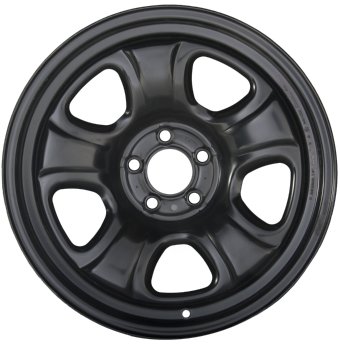If you are interested in putting a new set of wheels on your car, one of the first and most important things you should know is the bolt pattern of the wheel that is currently on your vehicle. The bolt pattern refers to the number of lugs on the wheel…
Determining Your Car’s Wheel Bolt Pattern
 As the operator of the largest privately held inventory of OEM wheels and OEM hubcaps in the United States, you’d better believe we deal with a lot of confusion regarding bolt pattern.
As the operator of the largest privately held inventory of OEM wheels and OEM hubcaps in the United States, you’d better believe we deal with a lot of confusion regarding bolt pattern.
Thankfully, the majority of our larger corporate clients purchasing OEM wheels in bulk by the palettes already understand what a bolt pattern is, how a bolt pattern is measured, and what this information is used for. Once in awhile, we do have to enlighten even the most seasoned of wheel distributors with a quick refresher on how to properly measure the bolt pattern, even if they already comprehend the meaning of the term.
While it is true that providing OEM wheels in bulk by the palette is our bread and butter, we’re a family run business at the end of the day. We don’t just service large corporations. Whether you need a set of replacement hubcaps or your the purchaser for a company buying thousands of wheels, we want to earn your business.
As OEM wheel distributors catering to a wide variety of clients with an equally varying understanding of auto parts, it is our duty to make sure all of our customers are in the know about all the details needed to successfully order a replacement wheel without worrying whether or not it will fit when it arrives. So without further delay, here is everything you need to know about bolt patterns for your next wheel purchase.
Quick Wheel Refresher
Automotive wheels are held in place by a specific type of bolt referred to as a lug nut. Depending on the year, make, and model of the vehicle, there will most likely be either four, five, six, or eight lug holes.
What is A Bolt Pattern?
The term bolt pattern was coined by the automotive industry to convey two pertinent details about the wheel’s design. Bolt patterns are sometimes referred to as “bolt circles”. Here are two bolt pattern examples:
5 x 120mm
5 x 5”
The value that comes before the “x” is simply how many bolts (lug nuts) attach the wheel to the vehicle. In the above examples, each wheel requires 5 lug nuts. The second value represents the length of the diameter of the imaginary circle that would pass through the center of each lug hole. Different manufacturers use different units to measure this diameter. The first example has a diameter of 120 millimeters, whereas the second example has a diameter of five inches.
How To Determine Your Bolt Pattern
The first step to determining your bolt pattern is to count the lug holes on your wheel. The next step is to come up with a measurement for your imaginary circle’s diameter. This can be measured manually. If you have an even number of lug holes, pick two lug holes that are directly opposite each other and measure the distance from the center of each hole. If you have an odd number of lug holes, measure from the center of any lug hole to a point directly in between the two lug holes on the opposite side of the circle.
Other Ways To Determine Your Bolt Pattern
- Purchase a specialized tool referred to as a Bolt Pattern Gauge, available at most auto parts stores or online.
- Enter your vehicle’s Year, Make and Model + the words “bolt pattern” into Google.
- Contact your vehicle’s manufacturer and ask them directly.
If you still have questions about how to determine the bolt pattern of your wheel, or you just want to be 100% sure before ordering replacement wheels, give us a call at 1-800-981-8321. We’d be happy to walk you through any questions you might have.







